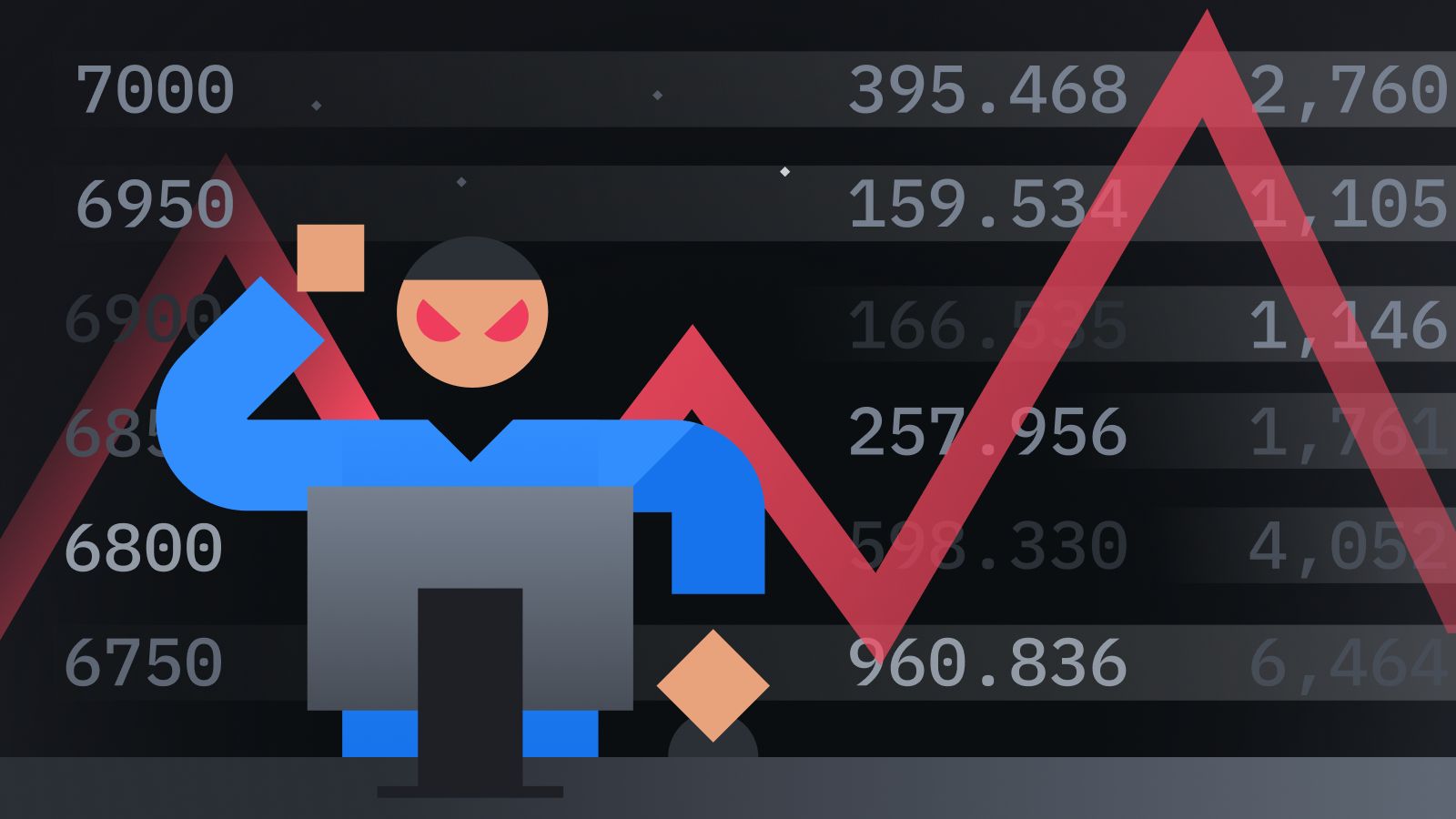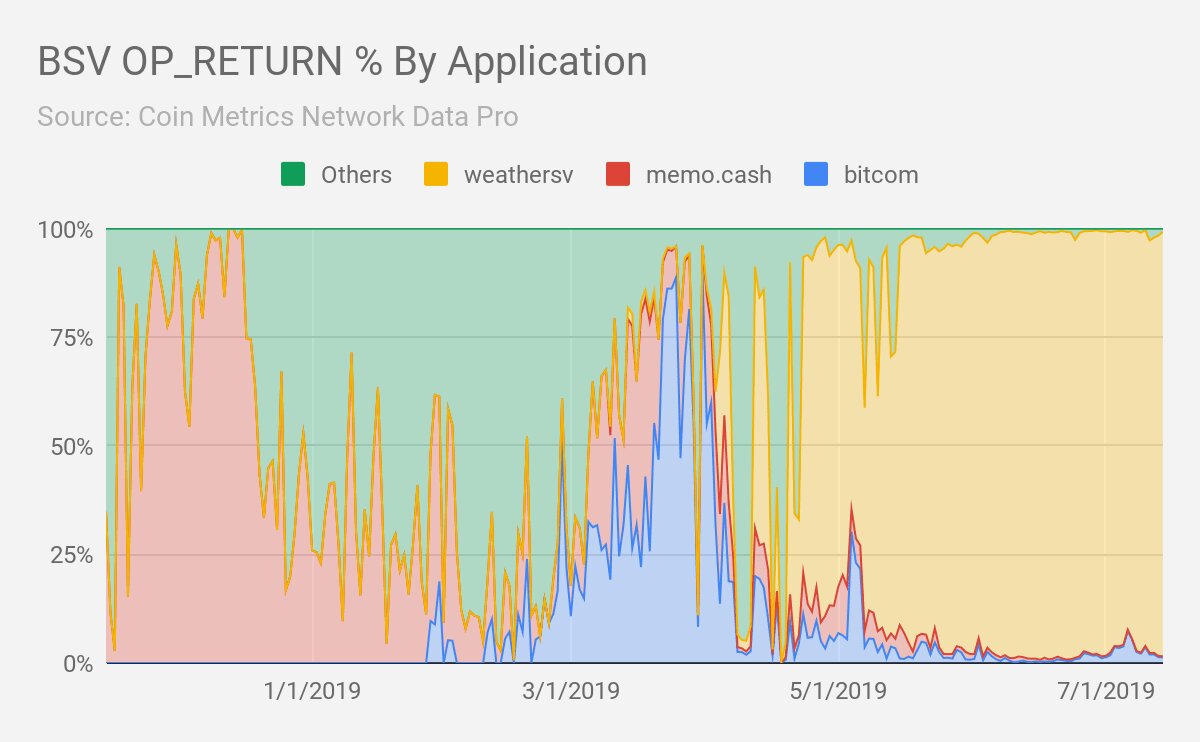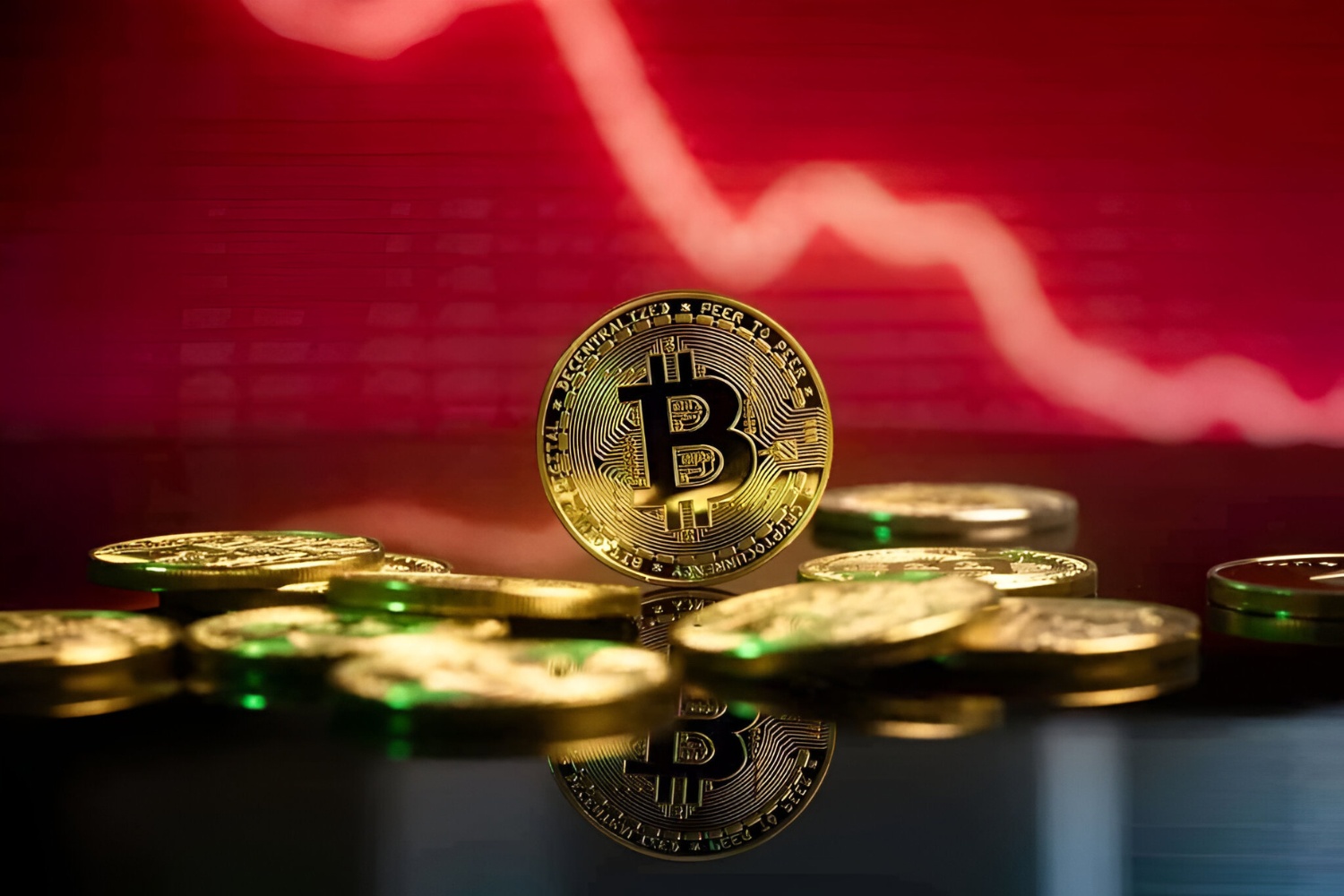Introduction
Welcome to the world of spoofing trading, where the line between legitimate trading strategies and market manipulation becomes blurred. Spoofing trading is an illegal practice that involves placing misleading orders in financial markets with the intention of creating a false impression of supply or demand. This deceptive technique is employed by traders to manipulate market prices and profit from the ensuing price fluctuations.
Spoofing trading has gained significant attention in recent years, as regulators and market participants grapple with the challenges it presents. It not only undermines market integrity but also erodes investor confidence. As a result, regulators around the world have ramped up efforts to detect and curb spoofing activities, imposing hefty fines and legal consequences on those found guilty.
In this article, we will delve into the world of spoofing trading, exploring its definition, how it works, and the common techniques employed. We will also examine the legal and regulatory implications of spoofing trading and highlight real-life examples to illustrate the impact it can have on financial markets. Lastly, we will provide some guidance on how you can protect yourself from falling victim to spoofing schemes.
Now, let us embark on this journey to unravel the intricacies of spoofing trading and shed light on this illegal practice that has shaken the foundations of financial markets.
Definition of Spoofing Trading
Spoofing trading is a deceptive practice in the financial markets where traders place large orders with the intention of canceling them before they can be executed. The purpose of spoofing is to create artificial market demand or supply, tricking other market participants into making trading decisions based on false information.
At its core, spoofing involves manipulating the perceived liquidity of an asset by placing orders that are intended to be canceled. Traders who engage in spoofing typically create an illusion of buying or selling pressure by submitting a large order on one side of the market. However, their intention is not to execute the order but to cancel it once other market participants react to the false signal created. The rapid cancellation of these orders deceives other traders into believing there is genuine interest in buying or selling, leading them to adjust their own positions accordingly.
It is important to note that spoofing trading goes beyond innocent market behavior and crosses into the realm of market manipulation, as it aims to distort the fair and orderly functioning of financial markets. To be considered spoofing, the trader must have the intent to cancel the order before it is executed. This intent determines the nature of the activity and distinguishes it from legitimate trading practices.
Spoofing is often associated with high-frequency trading (HFT) and algorithmic trading, as these strategies allow for the rapid placement and cancellation of orders. The advent of electronic trading platforms and computer algorithms has made it easier for traders to engage in spoofing on a larger scale and with higher speed.
Regulators and market participants are increasingly recognizing the detrimental impact of spoofing on market integrity and have taken steps to deter and penalize those who engage in these illicit activities. By understanding the definition and mechanics of spoofing trading, we can better grasp the challenges and implications it poses to the fairness and transparency of financial markets.
How Spoofing Trading Works
Spoofing trading involves a series of deceptive actions that aim to manipulate market prices and exploit other market participants. Understanding how spoofing works sheds light on the intricacies of this illegal practice.
The process of spoofing typically starts with a trader placing a large order on one side of the market, creating an artificial impression of supply or demand. This order is intended to attract other market participants and influence their trading decisions. Once other traders start reacting to the false signal by placing orders in response, the spoofer quickly cancels their initial large order.
The rapid cancellation of the spoof order is a crucial step in the process, as it leaves the market participants who responded to the false signal stranded with positions that they may no longer want. This sudden shift in market dynamics can cause price volatility and enable the spoofer to profit. By taking advantage of the resulting price fluctuations, the spoofer can buy or sell the asset at more favorable prices, thereby reaping financial benefits.
To make the spoof orders appear more convincing, traders may employ various techniques. One common technique is layering, where multiple non-genuine orders are placed at different price levels above or below the current market price. These orders give the appearance of substantial buy or sell interest, inducing other traders to react and potentially move the market in the desired direction. Once the market is influenced in the intended direction, the spoofer cancels all the non-genuine orders, leaving others with unfavorable positions.
Another technique used in spoofing trading is quote stuffing. This involves bombarding the market with a large number of orders or cancellations in quick succession, creating chaos in the order book. This overload of information makes it difficult for other market participants to discern genuine orders from non-genuine ones, leading to confusion and potentially influencing their trading decisions.
It is worth noting that technology plays a crucial role in facilitating spoofing trading. High-frequency trading (HFT) algorithms and sophisticated trading systems allow for the rapid placement and cancellation of orders, making it easier for spoofers to execute their strategies swiftly.
By strategically placing and canceling orders, spoofing traders manipulate market perceptions, create artificial supply or demand, and exploit the resulting price movements for their own gain. This deceptive practice undermines market fairness and can disrupt the stability and integrity of financial markets.
Common Techniques Used in Spoofing Trading
Spoofing trading involves a range of deceptive techniques aimed at manipulating market prices and misleading other market participants. These techniques are designed to create artificial demand or supply and exploit the resulting market movements. Understanding these common techniques sheds light on the complexities of spoofing trading.
1. Layering: This technique involves placing multiple non-genuine orders at different price levels above or below the current market price. These orders give the impression of significant buying or selling interest, enticing other traders to react and potentially move the market in the desired direction. Once the market reacts, the spoofer cancels all non-genuine orders and takes advantage of the resulting price fluctuations.
2. Quote Stuffing: In this technique, the spoofer floods the market with a large number of orders or cancellations in rapid succession. This flood of information overwhelms other market participants, making it difficult for them to differentiate between genuine and non-genuine orders. This confusion can influence trading decisions and potentially create a desired market movement that the spoofer can exploit.
3. Hidden Orders: Spoofing traders may use hidden orders, also known as iceberg orders, to mask their true intentions. Hidden orders are large orders that are only partially displayed to the market. By revealing only a fraction of their order, spoofers give the impression of limited supply or demand when in reality, they have a more significant position. This technique can deceive other traders and create false market perceptions.
4. Time Delays: Some spoofers introduce intentional time delays in their order placement and cancellation to further deceive other market participants. By strategically delaying their actions, spoofers can create false patterns and cause other traders to react based on outdated or misleading information.
5. Wash Trades: Wash trades involve simultaneous buying and selling of the same asset, executed by the same trader or group of traders. These transactions are conducted to give the impression of genuine trade activity and increase trading volume, which can attract other market participants. However, the ultimate goal is not to generate a real economic benefit but to deceive and manipulate market perceptions.
It is important to note that these techniques are not exhaustive, as spoofing traders continuously adapt their strategies to evade detection. Additionally, advancements in technology and the rise of high-frequency trading have enabled spoofers to execute their strategies more efficiently and on a larger scale.
Regulators and market surveillance entities are actively working to detect and prevent spoofing activities by implementing sophisticated algorithms and monitoring systems. By understanding these common techniques, market participants can be more aware of potential manipulation and contribute to maintaining a fair and transparent market environment.
Legal and Regulatory Implications of Spoofing Trading
The practice of spoofing trading has severe legal and regulatory implications, as it undermines the integrity and fairness of financial markets. Regulators and authorities around the world have recognized the need to take action against spoofers and have implemented measures to curb these deceptive practices.
1. Market Manipulation: Spoofing trading falls under the category of market manipulation, which is strictly prohibited by financial regulations. Market manipulation distorts the natural supply and demand dynamics of markets and can have detrimental effects on the stability and efficiency of financial systems. By intentionally creating false market perceptions, spoofers manipulate market prices and exploit other market participants.
2. Securities Laws: Many jurisdictions have specific securities laws and regulations that encompass spoofing trading. These laws aim to protect investors and maintain the integrity of financial markets. For example, in the United States, spoofing is prohibited under the Dodd-Frank Wall Street Reform and Consumer Protection Act, which empowers authorities, such as the Securities and Exchange Commission (SEC) and the Commodity Futures Trading Commission (CFTC), to enforce penalties and initiate legal proceedings against spoofers.
3. Penalties and Legal Consequences: Spoofing can result in significant legal consequences for those found guilty. Regulatory authorities have the power to impose substantial fines and penalties on individuals and firms engaged in spoofing trading. These penalties may include monetary fines, disgorgement of profits, suspension or revocation of trading licenses, and even imprisonment in some cases. The severity of the penalties depends on various factors, including the jurisdiction and the extent of the spoofing activity.
4. Global Coordination and Collaboration: Financial regulators and enforcement agencies worldwide are increasingly collaborating to combat spoofing trading. They share information, enhance surveillance techniques, and coordinate efforts to detect and prosecute spoofers. This global cooperation is crucial in ensuring consistent enforcement and deterrence of spoofing activities across different markets.
5. Market Surveillance and Technology: Regulators employ advanced market surveillance tools and technology to detect and prevent spoofing trading. These surveillance systems analyze order patterns, trading data, and market behavior to identify suspicious activities. Additionally, regulators work closely with market participants, such as exchanges and trading platforms, to implement mechanisms that can detect and prevent spoofing in real-time.
It is essential for market participants to be aware of the legal and regulatory implications of spoofing trading. By complying with regulations and reporting any suspicious activities, market participants contribute to maintaining the integrity and stability of financial markets.
Real-Life Examples of Spoofing Trading
There have been several notable instances of spoofing trading in the financial markets, where individuals or entities manipulated market prices and deceived other market participants. These real-life examples highlight the impact and consequences of spoofing.
1. The Case of Navinder Singh Sarao: One of the most high-profile cases of spoofing involved Navinder Singh Sarao, a British trader. Sarao employed spoofing techniques to manipulate the futures market, particularly the E-mini S&P 500 contracts. By placing large sell orders, he created an impression of significant selling pressure and caused sharp price declines. He would then cancel the sell orders and buy the contracts at lower prices, profiting from the ensuing price rebound. In 2016, Sarao pleaded guilty to spoofing and wire fraud charges, receiving a fine and extradition to the United States.
2. The JP Morgan Chase Case: JP Morgan Chase, one of the largest banks in the world, faced allegations of spoofing in the precious metals market. Traders at the bank were accused of placing large orders to create false market signals and influence prices. By canceling these orders after triggering market movements, they gained an unfair advantage. In 2020, JP Morgan Chase agreed to pay a record $920 million settlement to resolve spoofing charges brought by the CFTC, SEC, and Department of Justice.
3. The Flash Crash of 2010: The flash crash of May 6, 2010, is another significant example of market disruption caused by spoofing trading. During this event, the U.S. stock market experienced a rapid and severe decline followed by a quick recovery. Spoofing, along with other factors, contributed to the flash crash. Traders placed large sell orders, creating a false impression of selling pressure and triggering a chain reaction of automated trading. As a result, the market plummeted within minutes, only to recover shortly after. This incident highlighted the potential impact of spoofing on market stability and raised concerns about the vulnerability of automated trading systems.
These real-life examples demonstrate the disruptive nature of spoofing trading and the consequences faced by individuals and institutions involved in such practices. Regulators and authorities continue to strengthen surveillance and enforcement measures to detect and penalize spoofing activities, aiming to safeguard market integrity and protect investors from manipulation.
How to Protect Yourself from Spoofing Trading
As a market participant, there are several measures you can take to protect yourself from falling victim to spoofing trading and to safeguard the integrity of financial markets.
1. Education and Awareness: Stay informed about the techniques and indicators of spoofing trading. Understanding how spoofers manipulate the market and being aware of the signs of suspicious activity can help you make more informed trading decisions and avoid being misled.
2. Utilize Multiple Market Data Sources: Relying on multiple market data sources can help you verify the authenticity of trading signals and avoid making decisions based on potentially manipulated information. Cross-referencing data from different reputable sources can provide a more accurate picture of market conditions.
3. Implement Diverse Trading Strategies: Diversify your trading strategies to mitigate the impact of sudden price fluctuations caused by spoofing. By employing various approaches such as technical analysis, fundamental analysis, and risk management strategies, you can reduce reliance on a single indicator or signal that may be influenced by spoofers.
4. Monitor Market Depth: Pay attention to the depth of the order book and watch for sudden changes or anomalies. Unusual order placement or rapid changes in order quantities may indicate spoofing activity. Monitoring market depth can provide insights into potential manipulation attempts.
5. Report Suspicious Activity: If you come across suspicious trading activity or believe you have observed spoofing, report it to the relevant regulatory authorities or your trading platform. Cooperation with regulators and market surveillance entities is crucial in identifying and deterring spoofing traders.
6. Stay Abreast of Regulatory Developments: Keep up to date with regulatory changes and market surveillance initiatives. Regulators are continually enhancing their efforts to combat spoofing trading, implementing new rules and technologies to detect and prevent manipulation. By understanding these developments, you can adapt your trading practices accordingly.
7. Select Reliable Trading Platforms: Choose trading platforms and brokerage firms that have robust surveillance systems in place to monitor and detect spoofing activities. Reliable platforms prioritize market integrity and protect their clients from manipulation.
8. Collaborate with Regulators: Cooperate with regulatory bodies and participate in industry initiatives aimed at combating spoofing. By working together, market participants can contribute to the overall integrity and transparency of financial markets.
By adopting these proactive measures, you can enhance your awareness, protect yourself from spoofing trading, and contribute to the integrity of the financial ecosystem. Stay vigilant and remain informed to navigate the markets safely.
Conclusion
Spoofing trading is a deceptive and illegal practice that manipulates financial markets for personal gain. By creating false market perceptions through the placement and cancellation of orders, spoofers aim to influence prices and exploit other market participants. The implications of spoofing trading are far-reaching, including potential market instability, loss of investor confidence, and legal consequences for those involved.
Understanding the mechanics of spoofing trading, as well as the common techniques used by spoofers, is crucial for market participants. By being aware of the signs of spoofing and implementing protective measures, individuals can better safeguard themselves and contribute to the integrity of financial markets.
Regulators and authorities play a critical role in detecting and deterring spoofing activities. Through advanced surveillance systems, global cooperation, and robust enforcement measures, they aim to maintain market fairness and protect investors from manipulation. Market participants should actively collaborate with regulators, report suspicious activities, and stay updated with regulatory developments to stay ahead of spoofing attempts.
Ultimately, maintaining the integrity of financial markets is a collective effort. By promoting transparency, education, and vigilance, we can work towards an environment where spoofing trading is minimized, investor confidence is preserved, and markets remain fair and efficient.

























